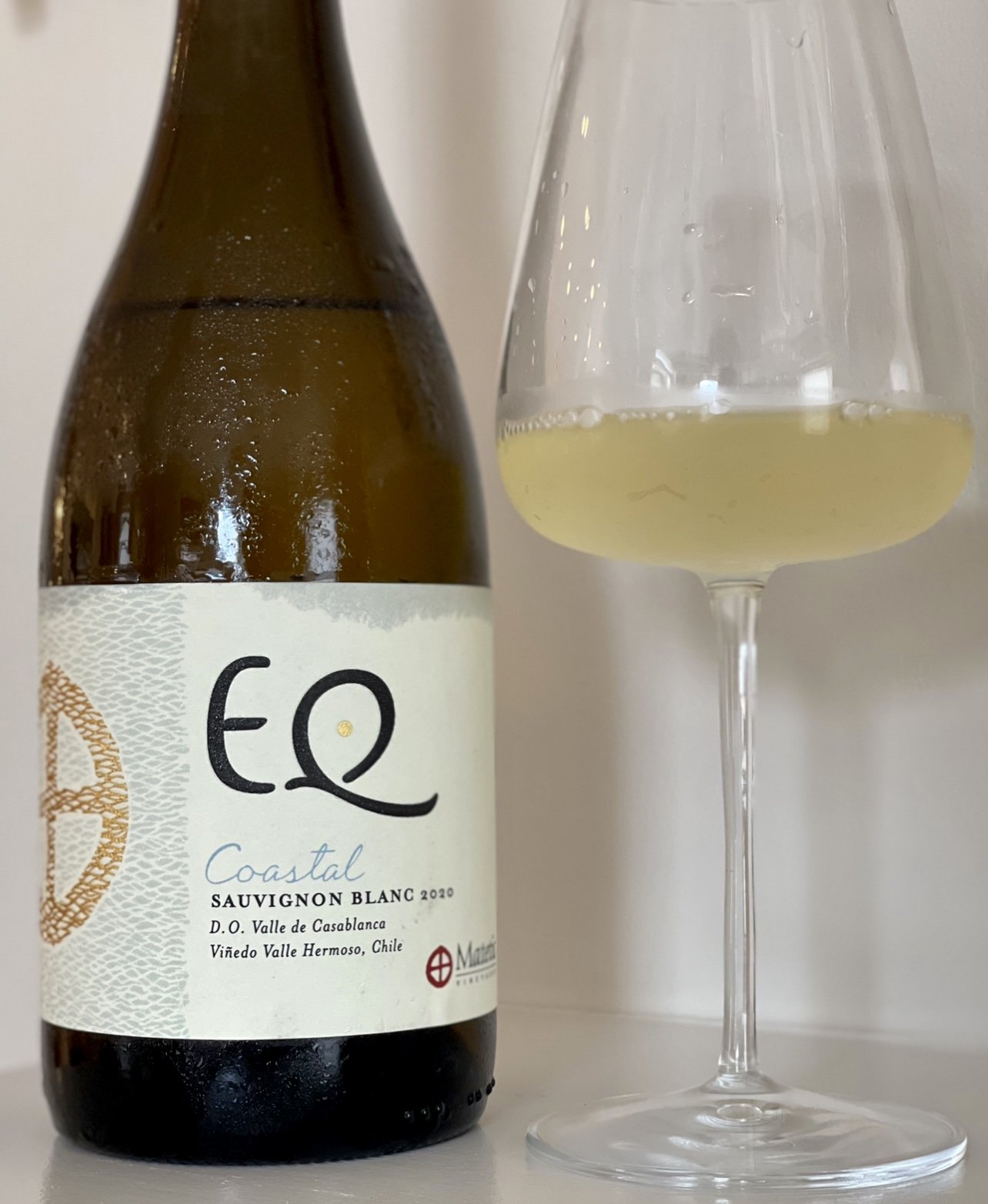Chilling Out With Six of Chile's Best Coastal Sauvignon Blancs
/Sauvignon Blanc is a great warm weather sipper. Typically light, bright and citrusy, it pairs well with the refreshing dishes of summer: a plate of oysters on ice, chilled seafood salad, cantaloupe wrapped in prosciutto, crisp summer salads and lemon garlic marinated fish filets.
You’re probably already familiar with two popular choices: the steely, mineral Sauvignon Blancs from France’s Loire Valley (Sancerre is one) and the fragrant, grassy, tropical-fruit scented examples from New Zealand. However, Sauvignon Blanc is produced in many other regions as well.
Chile, a country known for quality red wines made from Cabernet Sauvignon and Carménère, is quickly becoming one of the leading producers of world-class Sauvignon Blanc. Today, the grape variety is the country’s second most planted (after Cabernet), with many of the best offerings coming from the cool coastal region west of Santiago.
The Modern Day Story
Sauvignon Blanc in Chile dates back to the early 1980s when a handful of producers began to explore the country’s coastal regions. Long and skinny, most of the country is, in fact, close to the ocean. Therefore, when we talk about the coastal regions of Chile, we are talking about areas that are very close to the sea, many within just a few miles. Some of the vineyards even have ocean views!
Photo: ontheworldmap.com
One of the pioneers of Chilean Sauvignon Blanc was Pablo Morandé who, in 1982, planted the first vines in Casablanca, just northwest of Santiago. Morandé was influenced by what he had seen on a visit to Carneros, California, a cool-climate area close to the San Francisco Bay, and he believed Casablanca’s seaside location would provide a similar environment for growing fresh grapes.
After achieving excellent results, it wasn’t long before other wineries followed Morandé’s lead. By the 1990s, Casablanca, which until then had focused on dairy and livestock farming, was becoming one of Chile's most prominent areas for Sauvignon Blanc and other cool-climate grapes like Chardonnay and Pinot Noir.
“[In Casablanca], the extremely cool climate conditions, focus on low yields, and general water deficiency leads to a very aromatic style that’s welcomed by consumers,” says Stephanie Cain in vinepair.com. “It’s so popular that, since 1990, vineyards planted with Sauvignon Blanc in the region have increased 5,900 percent.”
The successes of Sauvignon Blanc in Casablanca led to a wave of new plantings in other coastal areas, notably in Santa Domingo and San Antonio and its sub-region Leyda Valley, as well as in areas further north, such as Quillota, Zapallar and Limarí, and to the south in Paradones.
Two Important Influences
Chile’s coastal terroirs are marked by two major elements that contribute to the wines’ character and distinct nuances: the Humboldt Current and the Coastal Range.
The Humboldt Current, a cold ocean current, provides a steady cooling effect that allows the grapes to ripen gradually. The slow ripening preserves herbal characteristics (jalapeño, asparagus, grass), as well as citrusy fruitiness (lime, lemon and grapefruit).
The Coastal Range is a mountain range that runs from north to south along the Pacific Coast and is made up of various types of granite. While the western slopes (Leyda, San Antonio, Paredones, Zapallar) are directly affected by cooler maritime conditions, the eastern slopes (Casablanca, Quillota and Litueche) are provided with a barrier from cold sea air. These site variations, along with different soil types, result in a wide stylistic range among Chile’s coastal Sauvignon Blancs, giving consumers many fine choices.
Six Chilean Coastal Sauvignon Blancs to Try
While each of the wines below have their own distinct personality, they all offer varying degrees of fresh fruit notes, citrusy acidity, and roundness on the palate—with a hard-to-beat value. They are excellent as an apéritif or with a full meal; think seafood, salads and fresh vegetable dishes.
Viña Koyle Costa La Flor Sauvignon Blanc 2021 ($18). Produced in the San Antonio Valley, this wine is everything you would want in a Sauvignon Blanc: well-structured, mineral, crisp and acidic with a very long finish; notes of grapefruit, lemon peel and ginger, as well as tropical fruit. Enjoy with oysters, grilled fish, sushi and sashimi. 12.5% ABV. Certified organic.
Matetic Vineyards EQ Coastal Sauvignon Blanc 2020 ($20). EQ stands for equilibrium, the Spanish word for balance, and this wine, both fresh and ripe, is a good example. Lemony and bright, with subtle citrus fruit notes, a long finish and an underlying minerality, this is a very elegant expression of Sauvignon Blanc. 13.5% ABV. Certified organic.
Viña Morandé Gran Reserva Sauvignon Blanc 2020 ($20). Aromas of fresh herbs, honey, and citrus fruits; on the palate there are cut grass and green pepper vegetal notes reminiscent of a New Zealand Sauvignon Blanc. Elegant and structured, from aging in French foudres and concrete egg-shaped tanks, with a persistence on the palate. A great choice with spicy barbecued foods. 13.5% ABV.
Viña Tabalí Talinay Sauvignon Blanc 2021 ($24). Grown in the limestone hills of the Limarí Valley, 7.5 miles from the sea, this fragrant Sauvignon Blanc is loaded with acidity, salinity and a long lemon lime finish. Perfect with oysters. 13% ABV.
Montes Wines Limited Selection Sauvignon Blanc 2021 ($15). Hailing from Leyda Valley vineyards with views of the sea, this refreshing, lemony Sauvignon Blanc could be taken for one from New Zealand with its bright and flashy fruit and grassy herbaceousness. 13.5% ABV.
Viña Garcés Silva Amayna Sauvignon Blanc 2020 ($25). Another Leyda Valley wine, but this example offers more subtle aromas and flavors and a fuller body. Yet it is similar too, with crisp acidity and lemon-lime and mineral notes. 14% ABV.
Many thanks to Wines of Chile for sending samples of the above wines. All opinions are my own.












